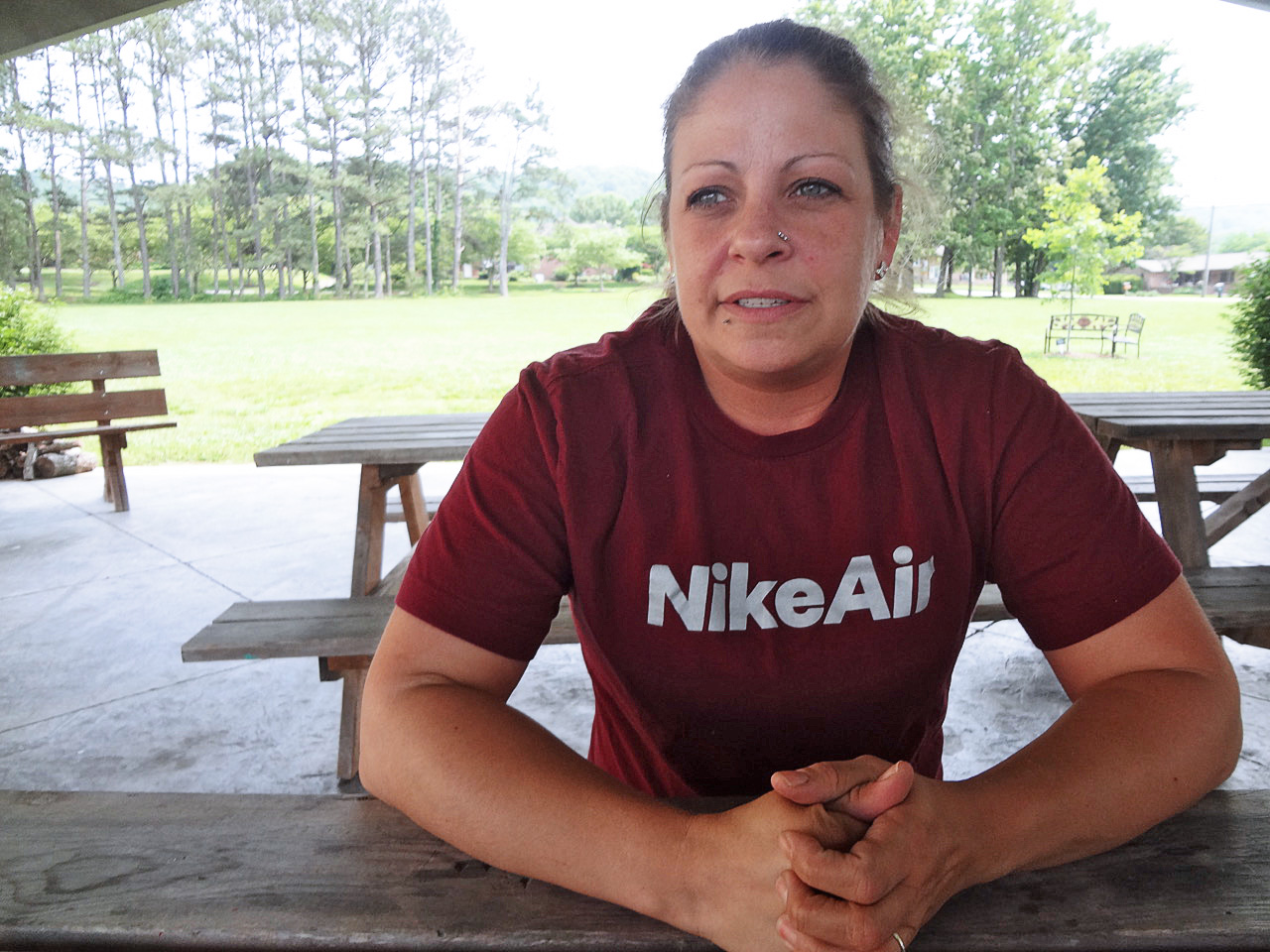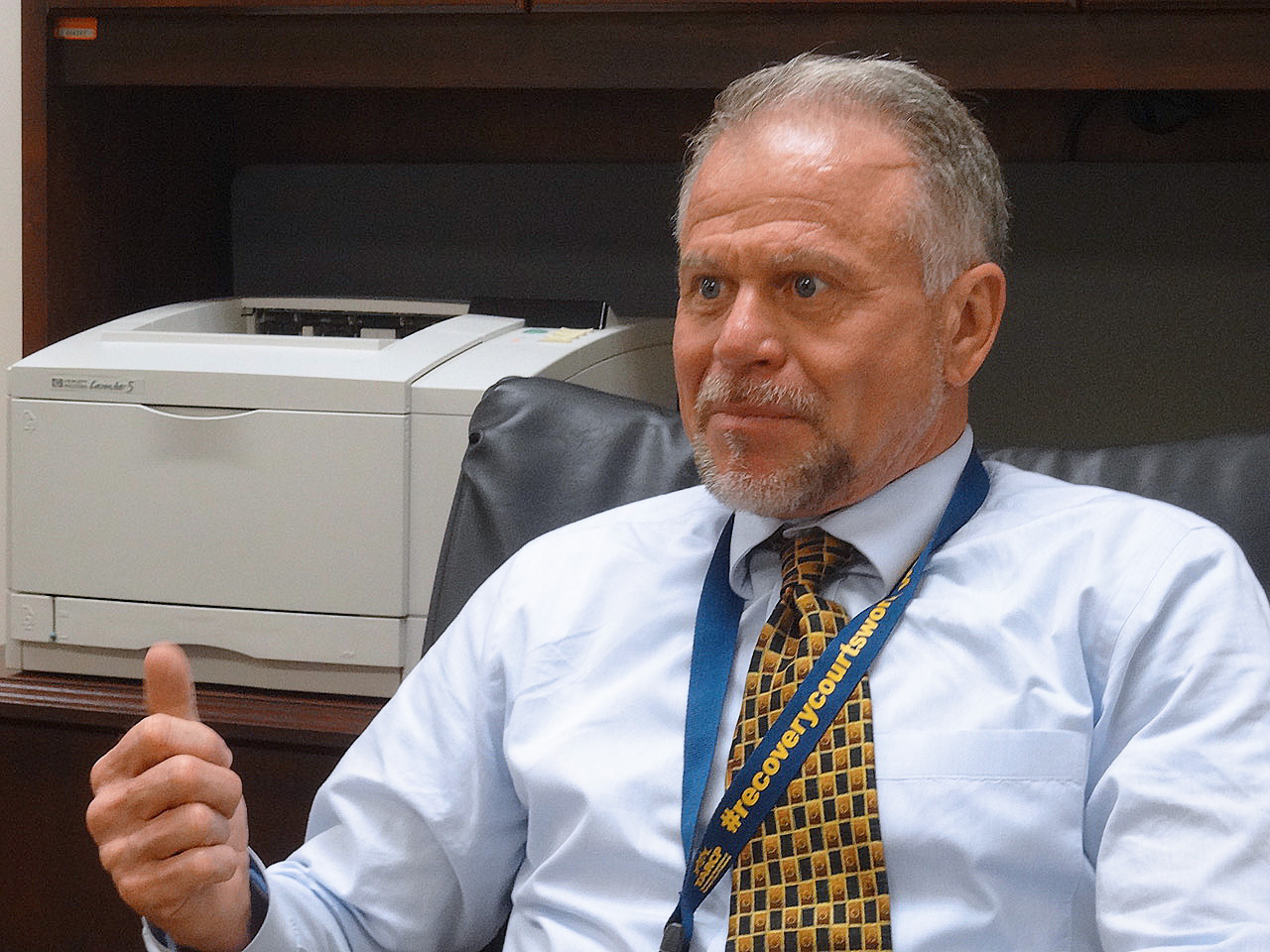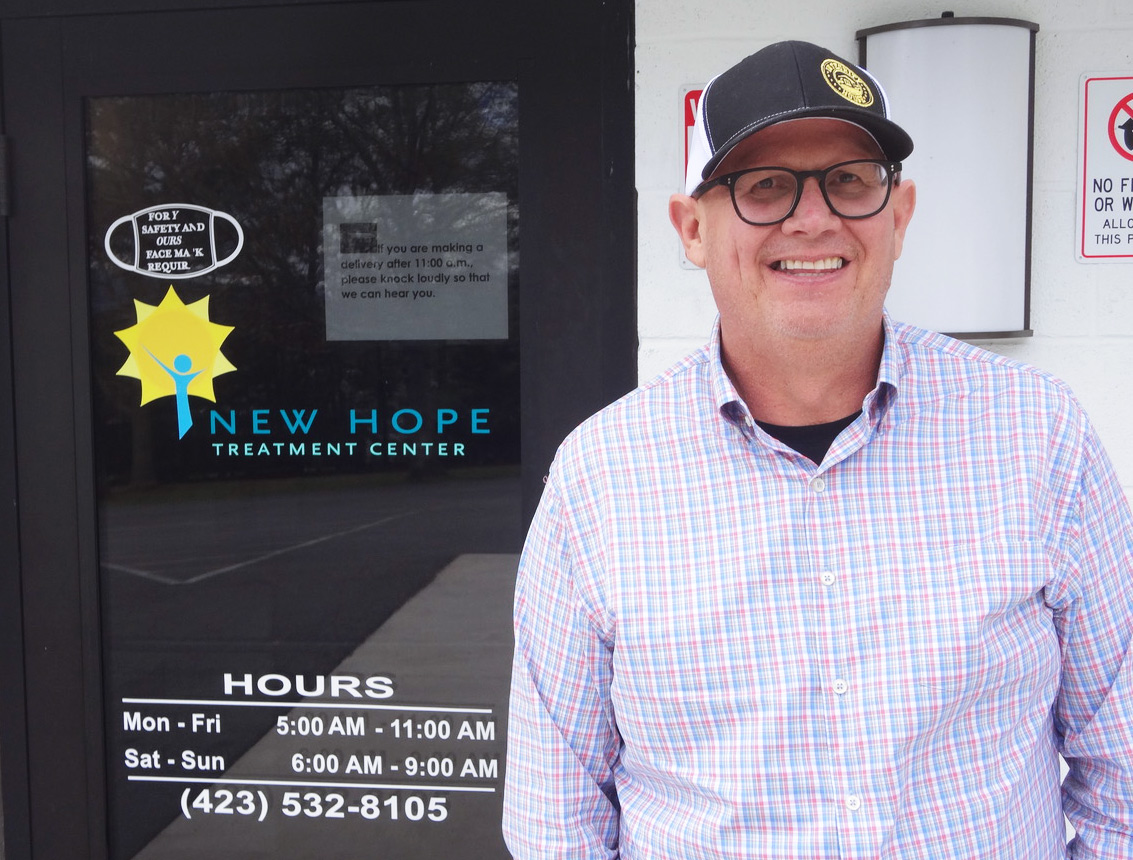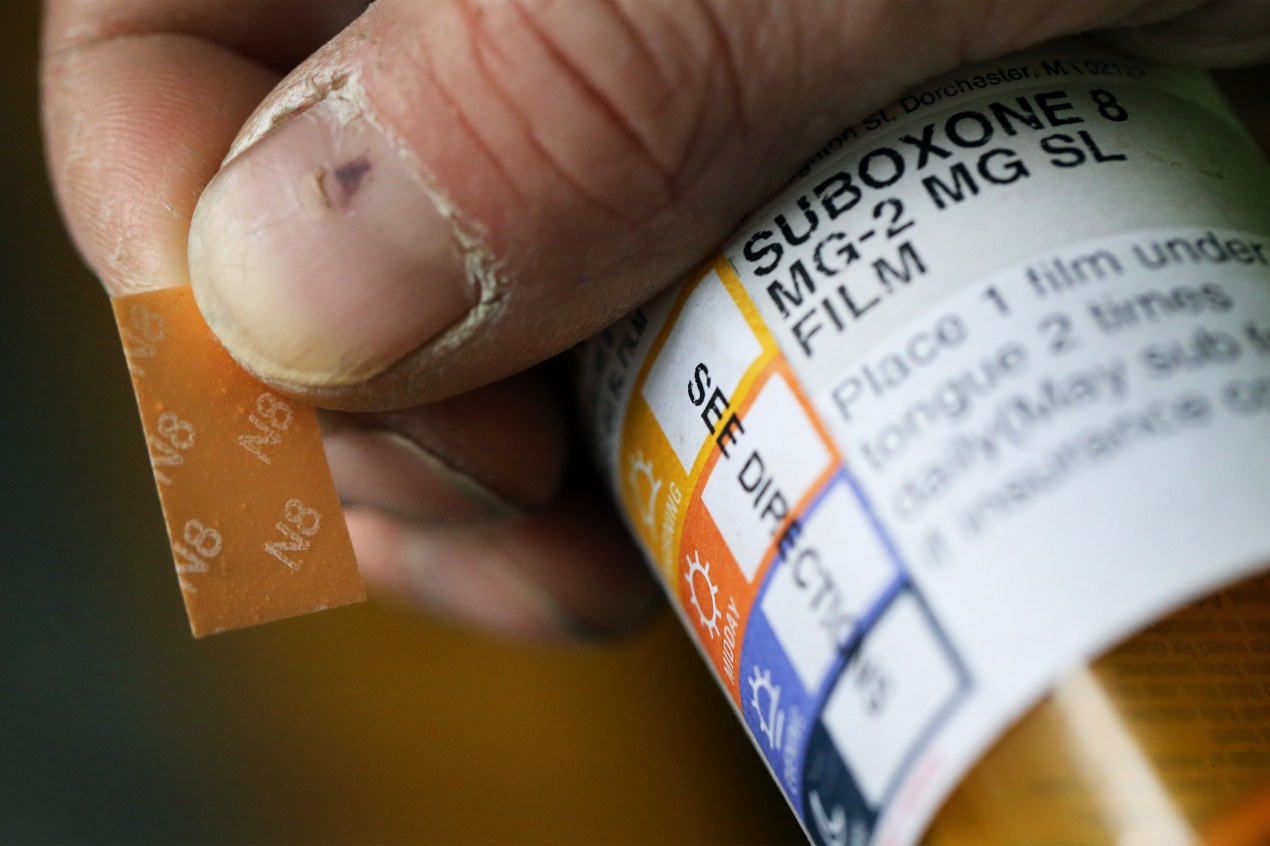DANDRIDGE, Tenn. — Rachel Solomon and judges hadn’t been on the best of terms. Then Judge O. Duane Slone “dumbfounded” her.
Solomon was given her first Percocet at age 12 by a family member with a medicine cabinet full. It made her feel numb, she said. “Nothing hurt.” By 17, she was taking 80-milligram OxyContins. A decade later, she was introduced to heroin.
During those years, Solomon was in and out of trouble with the law.
Then, five years ago, at 32, she arrived in Slone’s courtroom, pregnant, fearing the worst. But the state circuit court judge saw promise. He ruled that Solomon would serve jail time for an outstanding warrant for aggravated burglary and then would be placed in a program for pregnant or parenting women recovering from addiction. She would retain custody of her son, Brantley, now 4.
Slone also offered an option that many judges, particularly in rural jurisdictions, at that time were averse to extending: medication for opioid use disorder, or MOUD.
A study conducted a decade ago found that barely half of drug treatment courts offered medication treatment. Those that didn’t cited uncertainty about its efficacy and noted political, judicial, and administrative opposition. But research in the years since has persuaded many of the most insistent abstinence-only advocates.
According to Monica Christofferson, director of treatment court programs at the Center for Justice Innovation, amid an accelerating opioid crisis there has been a “huge shift” among judges, prosecutors, and law enforcement agencies away from the stigma associated with medication treatment. Simply put, “MOUD works,” Christofferson asserted.
By 2022, more than 90% of drug courts located in communities with high opioid mortality rates that responded to a survey said they allow buprenorphine and/or methadone, the medications most commonly used to treat addiction. The study also found that 65% of drug court program staffers have received training in medication for treatment, and a similar share have arranged for clients to continue receiving medications while serving jail time for program violations. Still, almost 1 in 4 programs told researchers they overrule medication decisions.
Federal legislation has lowered the barriers to it. And Bureau of Justice Assistance funding for treatment-court programs now mandates that medication for substance use disorder be provided.
Solomon experienced that shift in real time in Slone’s courtroom as the judge allowed her access to medication to treat her addiction to opioids.


As a young prosecutor in the 1990s in mostly rural eastern Tennessee, Slone was embedded with a drug task force and was well versed in efforts to counteract the supply side of the opioid crisis. Then, as a circuit court judge, he’d put his share of people behind bars on drug-related convictions.
As the crisis deepened, he started to wonder if addressing the demand side would be more effective.
Like so many other prosecutors and judges, Slone believed abstinence was the only path to recovery. But in 2013, after consulting with substance use disorder experts, he relented, introducing medication as an alternative to incarceration for pregnant women. By 2016, he had fully embraced it throughout his recovery courts — even as most judges, he said, “still believed that it was substituting one drug for another.”
Building from evidence-based research, Slone has launched programs that show how a judge, and a region, can trade an abstinence-only, lock-’em-up approach for one that offers a full range of paths to recovery.
Before witnessing medication treatment’s efficacy, Slone said, he would tell a defendant charged with a drug offense, “‘This is your second chance. If you violate the conditions of your probation, I’m going to put you in jail.’”
Often, six months later they’d be back in his courtroom, charged with a low-level crime and having tested positive for drugs. “They’re 19, maybe 20 years old, and I’m executing a five-year sentence. It makes me sick to my stomach now.”
Slone was sure there must be a better way.
A drug recovery court, which he co-founded in his 4th Judicial District in 2009, was a first step. It allows defendants with nonviolent drug-related charges to avoid jail time by entering treatment and counseling. They’re closely monitored by a team that includes a judge, case manager, public defender, prosecutor, and probation officer. If the participant violates the terms of the agreement, the first step is a reassessment of treatment needs. Multiple violations may result in incarceration.
Because this form of drug court is resource-intensive, relatively few people can be enrolled. So in 2013, Slone introduced the Tennessee Recovery Oriented Compliance Strategy, or TN-ROCS, an alternative to jail for those who aren’t considered at high risk of recidivism but are deemed in urgent need of treatment. Many are pregnant women or mothers of young children.
Given the reduced need for supervision, the program can accommodate more participants. So far, more than 1,000 people have been on the district’s TN-ROCS docket.
Both the recovery court and TN-ROCS offer three medication options: buprenorphine, methadone, and naltrexone.
Since TN-ROCS’ launch, Slone said, his community has seen a decrease in property crimes and its jail population. Over its first five years, all 34 pregnant women in the program gave birth to healthy babies and 30 kept custody of their children. TN-ROCS is now being replicated across the state.
One barrier to broader acceptance of medication treatment in both rural and urban communities, Christofferson said, is a lack of education.
Corey Williams agrees. He advocates for educating criminal justice system officials. Williams is an officer with the Lubbock, Texas, Police Department and is a consultant with the Law Enforcement Action Partnership, which promotes drug policy and criminal justice reform. He believes that if more criminal justice officials had personal experience with medication to treat substance use disorder, they’d view it differently.
Williams’ wife, Brianne Williams, became addicted to opioids in medical school. She participated in a series of abstinence-only programs and was free of the drugs for seven years, then relapsed. She was arrested for writing herself a prescription for opioids and placed on probation.
She had entered a Suboxone treatment program, but her probation officer incorrectly informed her she couldn’t remain on Suboxone on probation. Williams relapsed, failed a drug test, and served 30 months in federal prison. After her release, she went back on Suboxone — a brand-name combination of buprenorphine and naloxone — and has maintained her sobriety. “It improved my life drastically,” she said. She now hopes to regain her medical license and specialize in addiction treatment.
The relative unavailability in rural areas of medication treatment is certainly a problem. A shortage, Christofferson noted, is not only an issue in itself, but also a barrier to overcoming stigma. More openings available, more success stories. More success stories, less stigma. Fewer provider options also means one bad actor — a provider who overprescribes or is otherwise negligent — perpetuates the stigma. Strict oversight is essential.

Physician Stephen Loyd influenced Slone’s decision to embrace medication treatment and is now a member of Slone’s recovery court team. Loyd was practicing internal medicine in eastern Tennessee when he developed a 100-pill-a-day addiction to prescription opioids. He was the inspiration for the character Michael Keaton portrayed in the Hulu series “Dopesick.” Loyd overcame his addiction and served as the state’s “opioid czar” under Gov. Bill Haslam from 2016 to 2018.
While in state government, Loyd helped plant the seed for TN-ROCS. He told Slone the first judge to take such an initiative would “be on the cover of Time magazine, because your success rates are gonna go up dramatically; you’re gonna save a bunch of lives.”
“He didn’t get on the cover of Time,” Loyd allowed, “but he did win the William H. Rehnquist Award.” The William H. Rehnquist Award for Judicial Excellence is among the country’s highest judicial honors.
Rachel Solomon contends one of those lives saved was hers.
Today she and her son are together; she’s employed. She remains on Suboxone. She feels good. And she feels fortunate she arrived in Slone’s courtroom when she did.
“He’s the reason I am where I am today,” she said. “He really is.”







